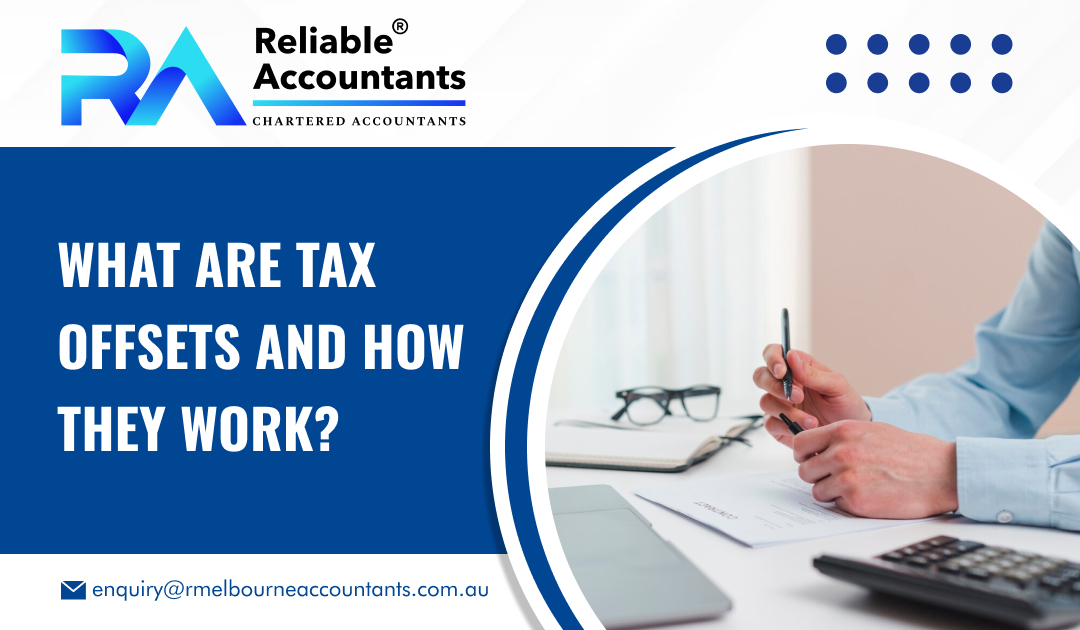You might have heard of tax offsets during tax time. To learn about tax offsets, how they work, and how you can save more on taxes with tax offsets, continue reading this blog post. Let’s get started:
What are tax offsets?
A tax offset minimises your payable tax on your taxable income. The tax offset amount you receive is based on:
- your taxable income
- the amount of tax you must pay.
If you don’t have any payable tax, you don’t receive any offset. Most tax offsets are not refundable, which means they can’t minimise your tax below zero. However, some offsets, such as the private health insurance offsets are refundable. The ATO works out some tax offsets automatically when you file your tax return. If you don’t know much about tax offsets, you can ask small business tax accountants in Melbourne.
Different types of tax offsets
- Seniors and pensioners tax offsets
To qualify for the seniors and pensioners tax offsets, you need to:
- qualify for an Australian Government pension or allowance
- satisfy income limits for you and your partner.
- Superannuation-related tax offsets
- A super income stream is a series of daily payments from your super fund. If you get income from an Australian super income stream, you may qualify for a tax offset equivalent to 15% of the taxed element and 10% of the untaxed element.
- You can claim a tax offset if you make a contribution to super on behalf of your partner. They must earn under $40,000 or not work.
- If you make $37,000 or less a year, you may qualify to receive a low-income super tax offset.
- Beneficiary tax offset
You should be getting Australian Government payments and allowances and paying tax to get the beneficiary tax offset. You don’t pay tax for the year if you both:
- are eligible for tax-free government pension
- don’t have other taxable income.
- Private health insurance offset
To apply for the private health insurance offset, you should have private health insurance (PHI). There is a contribution from the government towards your private health insurance.
- Offset for maintaining invalid or invalid carer
You may qualify to apply for a tax offset if you maintain an invalid or invalid carer. The invalid or invalid carer should be both:
- 16 years old or above
- getting government payments.
- Zone and overseas forces tax offsets
You are liable to the zone tax offset if you are a resident of either:
- specified remote areas
- isolated areas of Australia.
You can qualify for an overseas forces tax offset if:
- you are a member of either
- the Australian Defence Force
- a United Nations armed force
- you offer services in a specified overseas locality
- your income from that service is not exempt from tax.
- Lump sum payment in arrears tax offsets
If you get a lump sum payment in arrears, you may qualify for lump sum tax offsets. A lump sum payment is considered taxable when you get it but is for the previous income year. Eligible payments are related with:
- employment
- compensation
- welfare payments.
- Foreign income tax offset
You may qualify to claim a foreign income tax offset for foreign tax paid in another nation. The offset will prevent you from paying double tax on your foreign and worldwide income. Moreover, you can seek help from the best accountants in Melbourne if you are not sure about accounting or tax-related matters.
Conclusion
The taxable amount you need to pay will depend on your personal circumstances. You may be eligible to claim tax offsets and tax deductions to reduce your tax liability. However, many of you may not be sure what tax offsets and tax deductions you can claim. Therefore, you can rely on Reliable Melbourne Accountants.
More Useful Links:
Bank Reconciliation Statement

